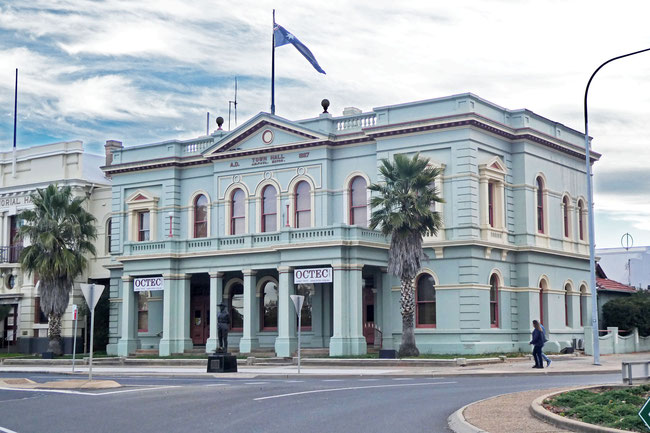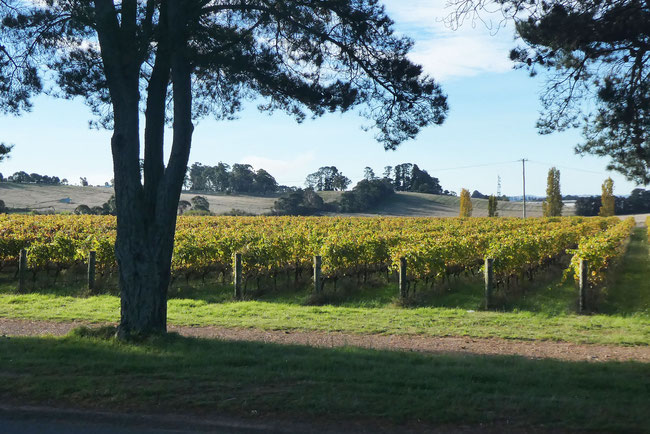
We’ve recently taken the chance of moving around a bit (just within Australia) by travelling from south-east Queensland to Central-west New South Wales, basing ourselves in the city of Orange. I’ve visited this area a few times in the last few years and have found that it is a place of surprisingly lovely countryside, and functional and community-orientated towns and small cities.
The Central-west is on a high plateau (high by Australian standards) – Orange is at an altitude of 860 metres. This means that the area is quite cool in winter, with some snow in town most years. The cooler weather made a nice relief from the late summer heat of Queensland.
Orange Buildings
The metropolises of Central-west New South Wales arose in the first half of the nineteenth century, when agriculture was Australia’s economic core, so they are well appointed and confidently laid out.
In the middle of the nineteenth century gold was discovered near Orange, which, along with good agricultural conditions, made the town quite wealthy. Consequently, the town has some substantial buildings, lovely old houses, and well developed parks. This is the old town hall:
As is usually the case in these old inland towns with a wealthy history, there are some impressive churches; this is the Holy Trinity Anglican church:

This is St Joseph’s Catholic church:
There are lovely solid old houses in these wide, leafy streets; here are a few examples:

Parks
There are some great parks in Orange, especially the formal Cook Park near the middle of town, and the Orange Botanic Gardens on the outskirt of the town.
Vineyards
Orange is on the flanks of an ancient volcano, Mount Canobolas, which give the surrounds good soil and altitude. This makes it a great area for growing a range of Mediterranean and temperate fruits, including grapes for wine, so there are lots of wineries in the area. Orange is close enough to Sydney for weekend visits so the wineries get plenty of visitors. We visited Ross Hill vineyard for a tasting; here are some of their vines starting to show their autumn colours:
I bought a very nice bottle of Tempranillo from them (I’ve become a hispanophile) – they even knew how to pronounce it!
Mount Canobolas
We climbed to the top of Mount Canobolas on the Spring Glade track (you can also drive up there). While the view from the top is expansive, it’s not particularly photogenic and it was a hazy day, so I didn’t bother with any pictures. However, we met a kangaroo on the track on the way down that was worth a photograph.
Moving around with Covid 19
I said in the introduction that we “took the chance” of travelling around. Moving around in these times of Covid 19 has risks of inconvenience and consequences - you never know if you going to get stuck somewhere that goes into lockdown, or that somewhere you've been gets an outbreak after you've gone, requiring you to get tested and go into quarantine.
When we were planning to leave the Gold Coast to travel to Central-west New South Wales we tossed up whether to go through Sydney or Brisbane. Brisbane seemed the safest bet, especially as Sydney had recently had an outbreak in its Northern Beaches, so we caught a train directly from the Gold Coast to Brisbane airport. But a week or so after we passed through Brisbane there was an outbreak! Fortunately we passed through Brisbane three days before the day from which quarantine was retrospectively required for Queenslanders traveling around the rest of the Australia. That could have been a huge hassle and would have made a mess of our travels, but luckily we avoided it.
Tags
If you enjoyed this blog post, you can find related posts under these headings:
Australia, New South Wales, Religion venues, Interesting buildings
Share this The Journey and the Destination post using your favourite social media:
Would you like to add something, or ask a question? Add a comment below (you can leave the 'Website' field blank):







